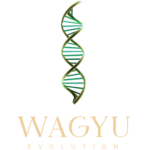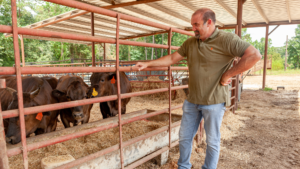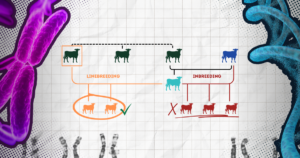The 16/16 Breeding Analysis and Rotational Breeding
Table of Contents
The Fullblood Pedigree Analysis using the Japanese 16/16 model is a highly accessible and cost-effective method for grouping Fullblood (FB) Wagyu breeding stock by their prefectural origins. This method assists breeders in predicting breeding outcomes, helping them to achieve desired traits in their herds, such as marbling, growth, and milk production. Developed and extended by Japanese master breeder Mr. Shogo Takeda, this method has been foundational in both Australian and Japanese Wagyu breeding strategies.
Key Principles of Wagyu Breeding
According to Mr. Kenichi Ono, author of “Japanese Top 100 Wagyu,” successful Wagyu breeding involves:
- Understanding the characteristics of each strain: Recognize the unique traits of different Wagyu strains.
- Planning combinations to cover weak points of individual strains: Combine strains to balance and enhance desirable traits.
- Not over-emphasizing one strain: Avoid focusing too much on a single strain to maintain genetic diversity and balance.
Steps for Fullblood Pedigree Analysis
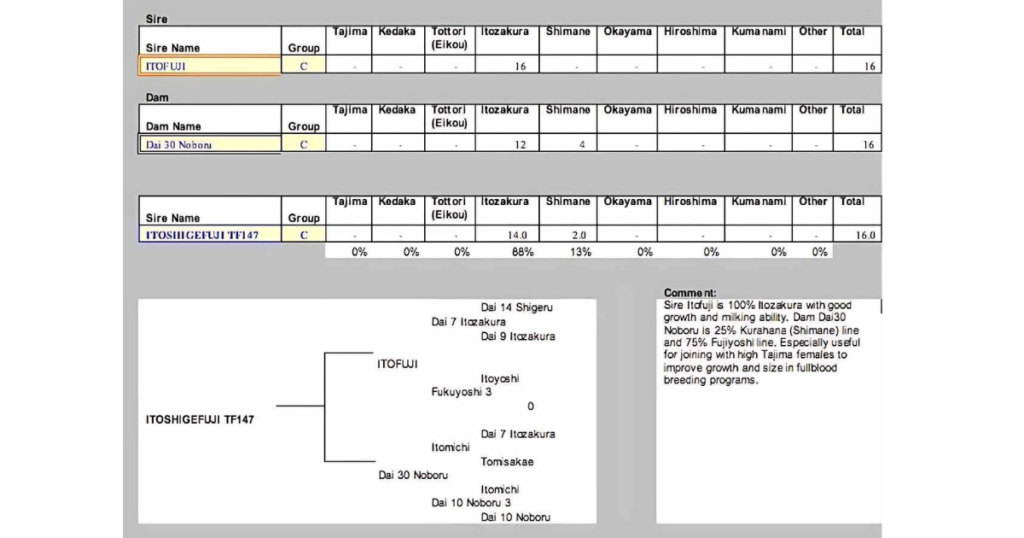
Step 1: Identify Regional Wagyu Strains
- Collect Pedigree Data: Gather comprehensive pedigree information for each Wagyu animal, tracing back at least four generations.
- Classify by Prefecture: Identify the prefectural origin of each ancestor in the pedigree. Key prefectures include Okayama, Shimane, Tottori, and Hyogo (Tajima).
- Each of the Wagyu ancestral bloodlines are assigned a number from 0 through 16 which denotes the percentage of a particular genetic lineage.
Step 2: Analyze Strain Characteristics
- Review Strain Attributes: Understand the characteristics and strengths of each strain.
- Okayama: Known for large frame and meat quality improvements through the Dai 13 Hanayama line.
- Shimane: Notable for structure and milk production, particularly through the Fujiyoshi line.
- Tottori: Focus on carcass weight and marbling, with significant contributions from the Kedaka line.
- Hyogo (Tajima): Renowned for high marbling, particularly through the Nakadoi line.
For example, an animal with a high percentage of Tajima blood is typically expected to be smaller, slower-growing, and have below-average maternal characteristics, but it will usually have above-average carcass marbling. On the other hand, an animal with a high percentage of Shimane/Fujiyoshi or Kedaka bloodlines is generally expected to be larger, faster-growing, and have above-average maternal characteristics, but it will have below-average carcass marbling compared to the average Wagyu animal.
Rotational Breeding
The rotational breeding model generally follows a “back cross” method, where a different sire from the same group is recommended for use in the second rotation.
If starting with high Tajima dams, growth-type sires from Group A or C should be used to increase body size, although caution is needed during calving when larger sires from these groups are bred with smaller females from Groups B and D.
In such cases, it might be preferable to use embryo transfer with larger recipient cows. Typically, calves from smaller Group B or D (Terminal sires) are smaller than those from Group A or C (Maternal sires).
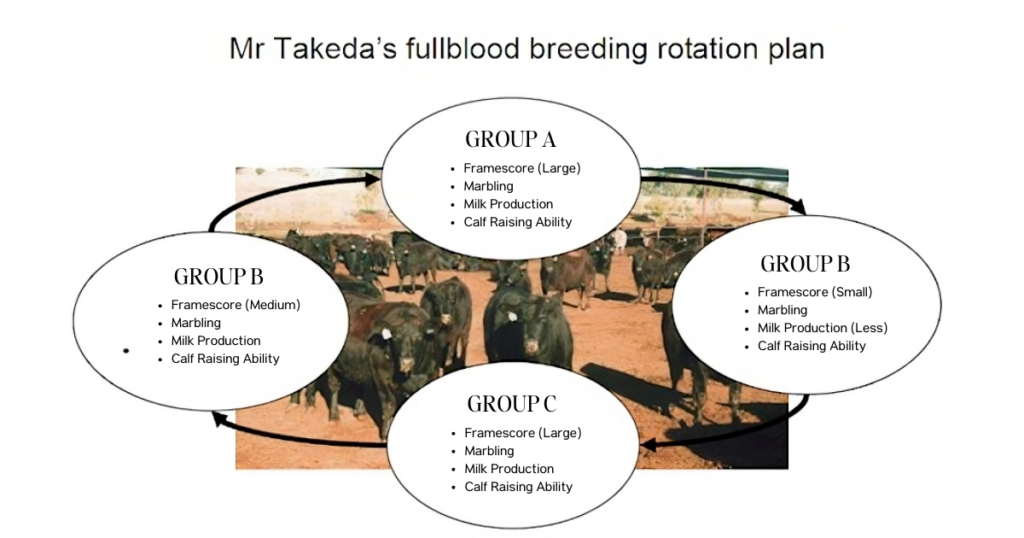
According to Mr. Takeda, the keys to success in Wagyu breeding are super size, good marbling, good milk production, and good calf-raising ability.
Breeding approaches vary among Wagyu breeders; some strictly adhere to the rotational model, while others are more flexible and focus on individual animals rather than theoretical group classifications. As herds become balanced over time, the distinctions between groups blur due to the genetic blending of all four groups, making it harder to classify animals. Some breeders cross Wagyu bulls with other cattle breeds for terminal beef production, emphasizing carcass quality over size and maternal traits since the offspring will be used for beef, and hybrid vigor will assist in growth.
In addition, some seed stock producers intentionally breed pure Tajima or high-Tajima animals to create strong Group B or D examples for future rotational breeding. However, if everyone employed this rotational breeding program, all animals would eventually become balanced, and pure lines like “100% Tajima” would disappear. This outcome happens to some extent in herds that follow this breeding methodology over time, as their breeding females become more balanced after several rotations. Therefore, this methodology works better in theory when breeding foundation animals rather than already balanced animals.
An essential component of these rotational breeding methodologies (or any selective breeding) is evaluating offspring and selecting sires and replacement heifers based on their traits. Offspring might inherit undesirable characteristics, such as smaller size and slower growth from Group B and D animals or below-average carcass qualities from Group A and C animals. Thus, measuring and evaluating offspring attributes is crucial to ensure the desired breeding outcomes.
Mr. Takeda’s Warnings
Mr. Takeda emphasized the importance of following the rotation in the correct sequence to achieve optimal results. Proper rotation produces calves with balanced traits such as larger frame, excellent marbling, good milk production, and mothering ability. This rotation method can be implemented using bulls from different groups, not just Takeda’s genetics.
Mr. Takeda noted the rising grain prices in the USA, driven by competition from ethanol production. This has influenced his fullblood feeding program, which now emphasizes faster growth rates to reduce the feeding period. His program grows cattle to 550kg live weight by 15 months using mainly hay and silage, then finishes them to 800kg live weight by 24 months with a higher grain ration. This approach reduces grain use by 25% while maintaining high marbling scores (7+ Japanese score, equivalent to USA BMS 10+) and carcass weights above 500kg.
Regarding the Japanese GH Exon and SCD marbling and fat tests, Mr. Takeda mentioned that while many breeders in Japan do not rely heavily on these tests, they are gaining importance among some breeders in the USA.
Conclusion
The Fullblood Pedigree Analysis using the Japanese 16/16 model represents a sophisticated framework for classifying Fullblood (FB) Wagyu breeding stock based on their regional origins, pioneered by esteemed breeder Mr. Shogo Takeda. This method not only reliably forecasts breeding outcomes but also empowers breeders to selectively enhance coveted traits such as marbling, growth rate, and milk production.
As underscored by Mr. Kenichi Ono, a nuanced understanding of each Wagyu strain’s distinct attributes is crucial for making informed breeding decisions that harmonize traits and safeguard genetic diversity. Mr. Takeda’s rotational breeding model, acclaimed for its effectiveness in Australia and Japan, is increasingly influential in the USA, guiding breeders to strategically utilize sires from Groups ‘B’ and ‘D’ to perpetuate desired traits over successive generations. Adapting to challenges such as volatile grain prices highlights Mr. Takeda’s commitment to optimizing feed efficiency while upholding superior beef standards.
The growing adoption of genetic testing among American breeders signifies a progressive shift towards refining breeding methodologies, ensuring that Wagyu beef production aligns with evolving market demands and global sustainability objectives.
References
Kenichi Ono.100 Greatest Wagyu in Japan.
https://www.wagyuinternational.co/foundation.php
http://www.australianwagyuforum.com.au/pdfs/Takeda%20Breeding%20Rotation%20.pdf
Kahi AK, Hirooka H. Genetic and economic evaluation of Japanese Black (Wagyu) cattle breeding schemes. J Anim Sci. 2005 Sep;83(9):2021-32. doi: 10.2527/2005.8392021x. PMID: 16100056.
Sasaki Y, Miyake T, Gaillard C, Oguni T, Matsumoto M, Ito M, Kurahara T, Sasae Y, Fujinaka K, Ohtagaki S, Dougo T. Comparison of genetic gains per year for carcass traits among breeding programs in the Japanese Brown and the Japanese Black cattle. J Anim Sci. 2006 Feb;84(2):317-23. doi: 10.2527/2006.842317x. PMID: 16424259.
